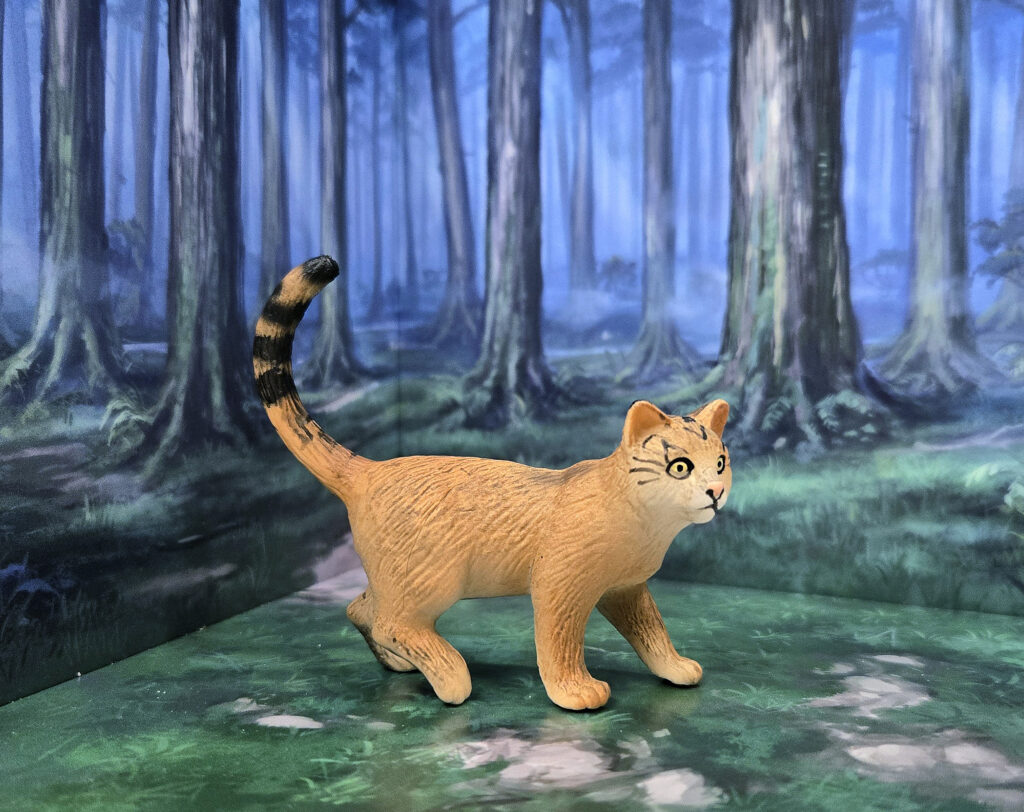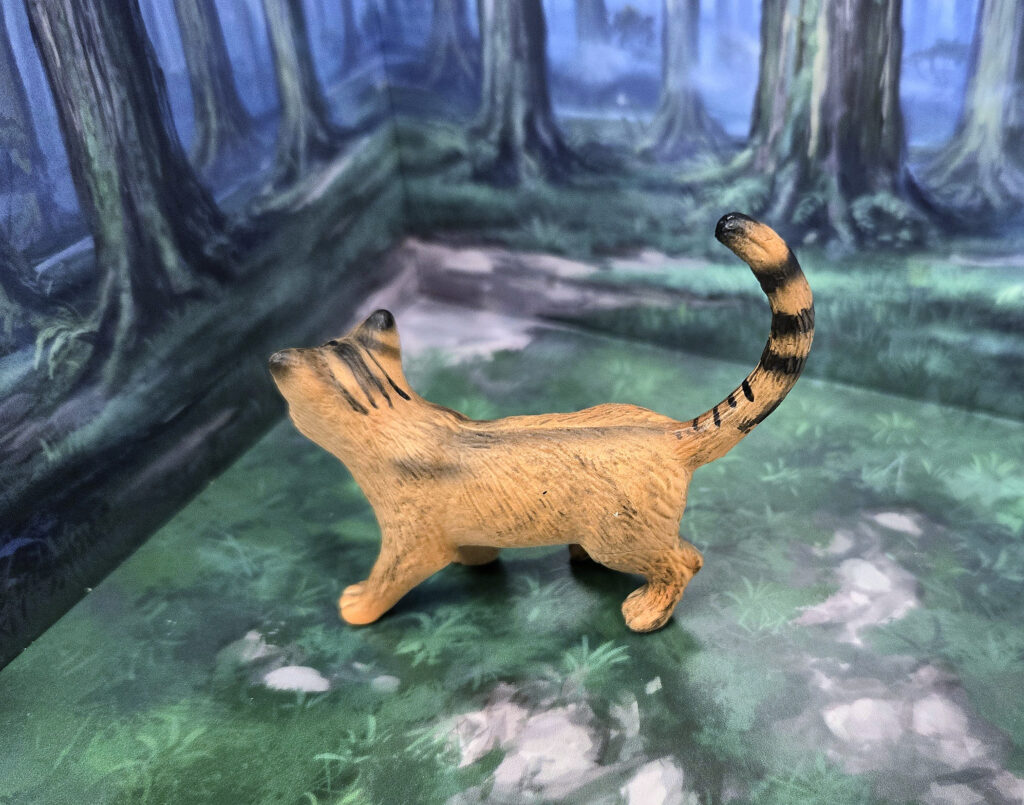Before I start this review, I must thank the folks at Happy Hen Toys for yet another review sample! It’s been a pleasure working with them in recent years and their generosity is very much appreciated.
Phylogenetics is the study of the evolutionary history of life on Earth, and one of my favorite disciplines of Zoology. It can also be a frustrating subject, especially when trying to elucidate the origins of domestic animals and their relationships to their wild counterparts. This is true of dogs, cattle, horses, and, the focus of today’s subject, cats. Domestic cats are descended from a ‘wildcat’. But what exactly constitutes a wildcat? The first description of a wildcat was in 1777 as Felis sylvestris (the name Felis was created by Linnaeus in 1778 to accommodate the domestic cat, F. catus). Numerous subspecies have been described over the years, including the African wildcat, F. s. lybica, which is now considered a valid species and consists of three subspecies, the Near Eastern wildcat (F. l. lybica) which occurs in northern Africa and Sinai south to Sudan, the Southern African wildcat (F. l. cafra) which occurs in southern Africa, and the Asiatic wildcat (F. l. ornata) which occurs in Asia. Felis sylvestris is now limited to the European wildcat which occurs in Europe, Turkey, and the Caucasus. The origins of the domestic cat are still not completely understood, and molecular studies have not done much to resolve the issue. Some studies looking at nuclear DNA show the domestic cat to be descended from the European wildcat while a study looking at mitochondrial DNA has the domestic cat descended from the Near Eastern subspecies of the African wildcat. Either way, it is generally accepted today that the domestic cat is derived from at least one of the populations of the F. lybica-complex, meaning that the European wildcat, as currently delineated, is not the direct ancestor of the domestic cat. Today we will be looking at the 2019 wildcat produced by Bullyland. Given Germany-based Bullyland’s preference for native fauna, it most certainly was intended to represent the European wildcat. By the way, I did my undergraduate degree at the University of Arizona so I guess that makes me a Wildcat, too! LOL.


The height at shoulder is approximately 3.3 cm for a scale of 1:10.6-1:12.1.

The figure is sculpted as if about to walk, or maybe having just stopped, with it’s right rear leg slightly lifted off the ground and its head cocked slightly to the right. The tail is upright, meaning the animal is confident, probably happy, and not alarmed. It is sculpted with the kind of quality seen in most standard-sized cat toys across most major Western manufacturers.

The base color is a golden-brown with lighter areas around the face, belly, and the bottoms of the feet (the foot pads are not painted). There is a lightly-applied dark wash over the body with a dark dorsal midline stripe and dark bands on the terminal half of the tail. So far not too bad, although ideally there should be some faint striping on the sides of the body. The painting around the face highlights specific features of the wildcat, including the lateral facial lines, the inverted ‘v’ shapes over they eyes (should be a little more central), dorsal striping on the head, infuscations at the tips of the ears, and a pink nose. I have to admit, the painting around the face, while accurate for the species, does come across a little too pronounced, giving the figure a somewhat stylized appearance. It doesn’t help that the facial features are centered around ‘deer-in-the-headlights’ eyes, which almost contradict the relaxed nature of the sculpt. Still, in my opinion it looks much better in-hand than it does in online promotional pics.

Despite the abundance of domestic cat figures, wildcats are rare in this hobby, and this is honestly the best option available, at least from traditional commercial manufacturers. I am not sure if the Etsy-based Beauty of Beasts produced this species; if they did, it is sure to be nicer, but also a lot more expensive. Firsthand Bullyland figures are not easy to come by here in the United States. Luckily, Happy Hen Toys recently added Bullyland to their inventory, where today’s wildcat can be purchased.

Here is a teaser pic with the subject my next review, which is related to today’s (although if you have been following posts on the ATF and DTF, it shouldn’t be a surprise what it is LOL):

Disclaimer: links to Ebay and Amazon on the AnimalToyBlog are affiliate links, so we make a small commission if you use them. Thanks for supporting us!





I look at that figure and just feel sad, because I remember what Bullyland was doing in 2001. The face on this one is just too much!
Yeah I wasn’t anticipating high praise or high voting for this figure. As I was researching it for the post, I was surprised to learn (or remember) it came out in 2019!!! It has a look of late 1990s written all over it!
I was perhaps too generous in rating it five stars but I was also excited to see a wildcat figure. I didn’t even know this one existed before today.